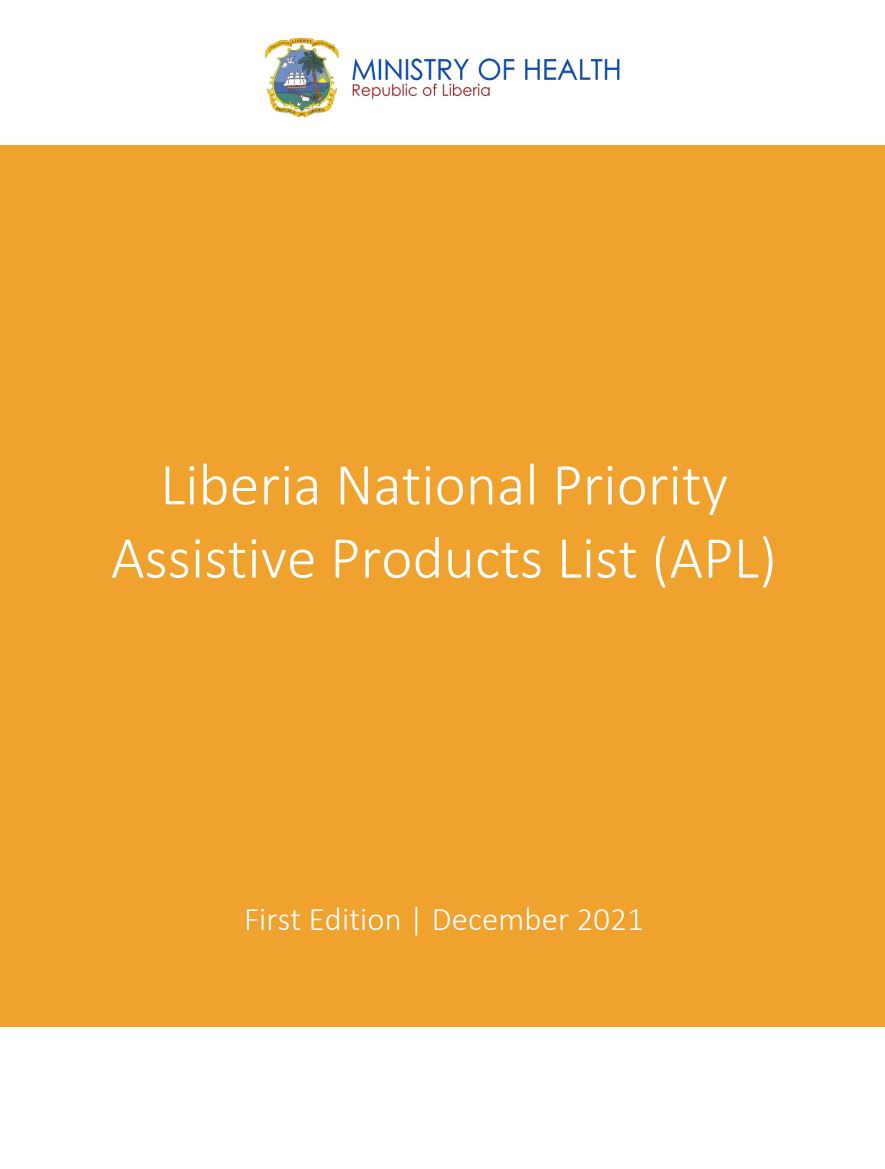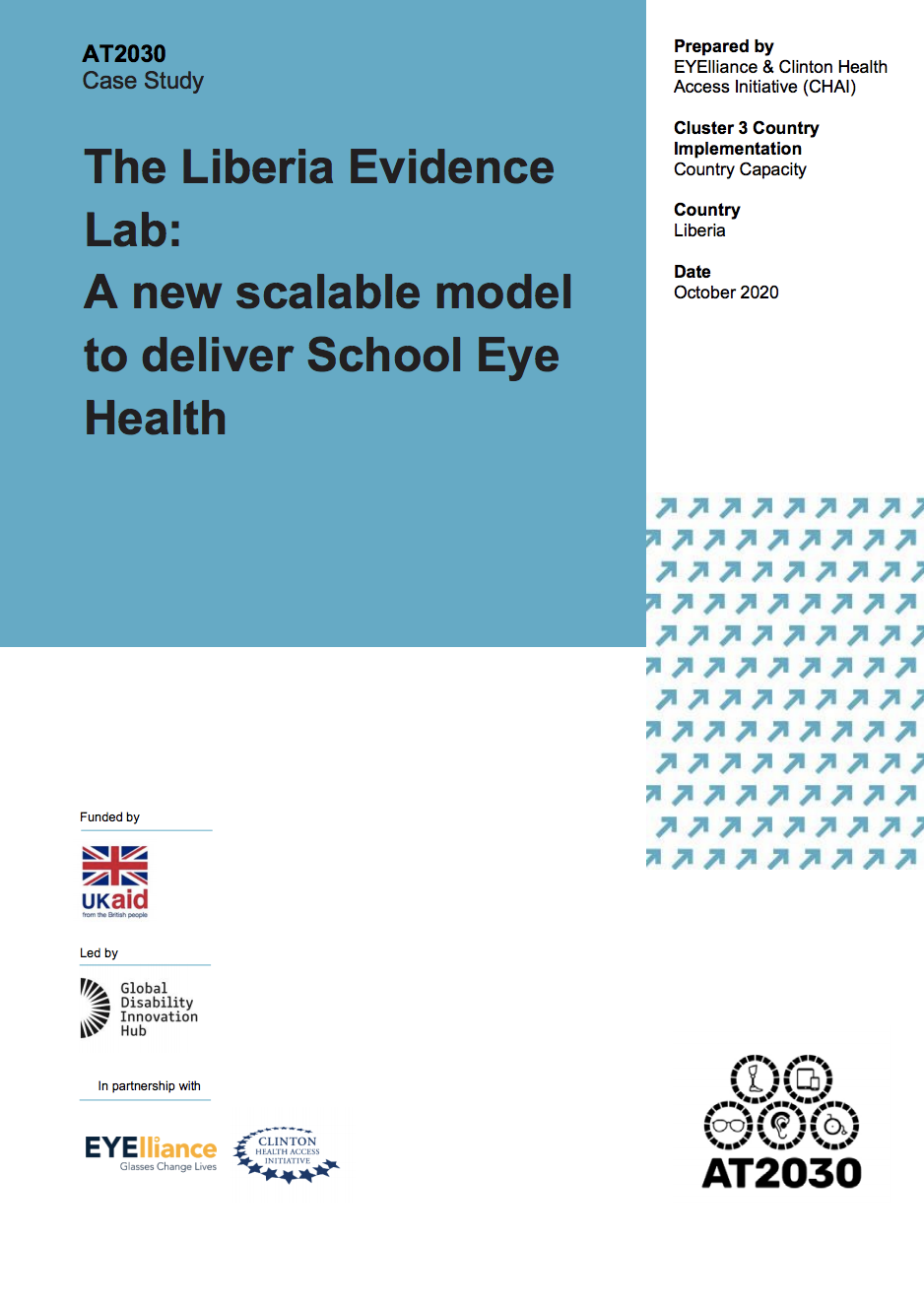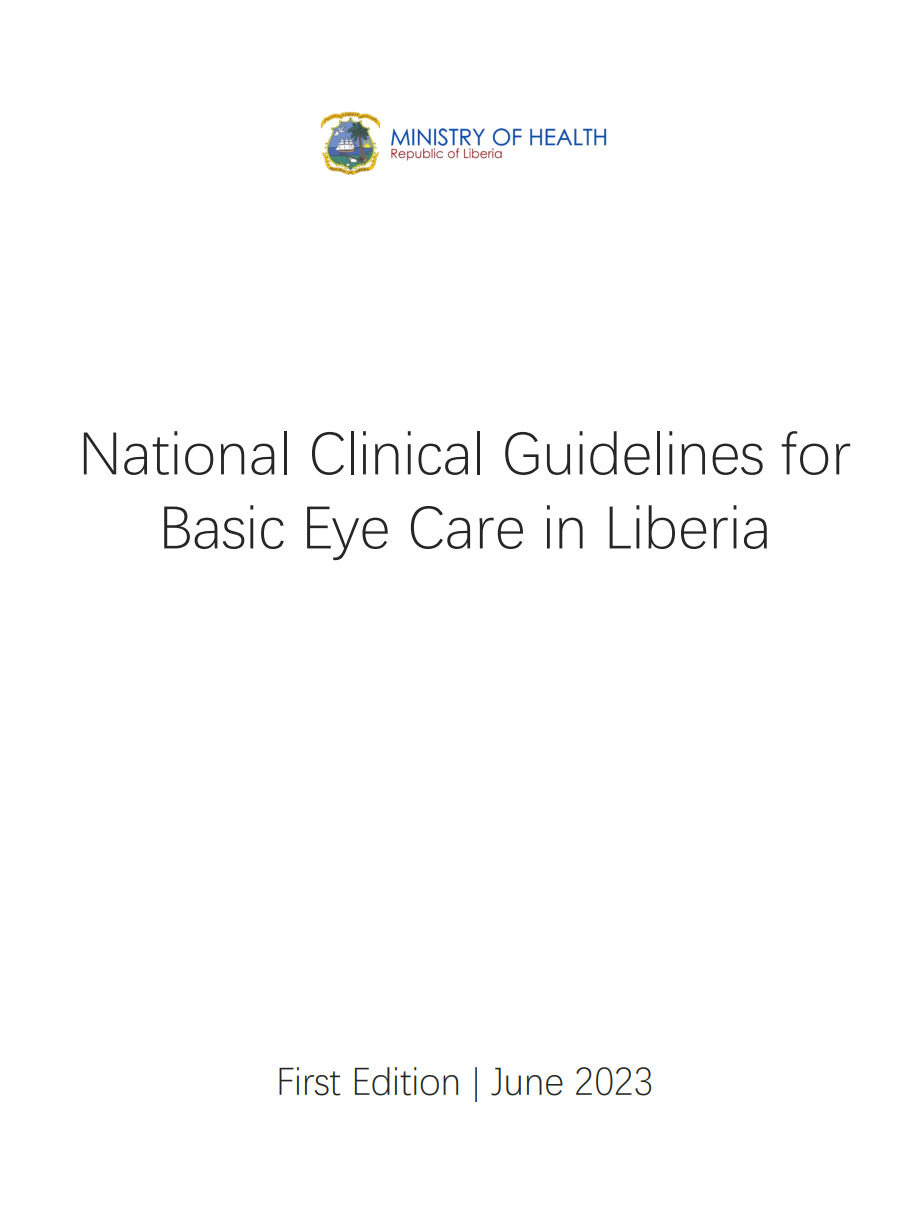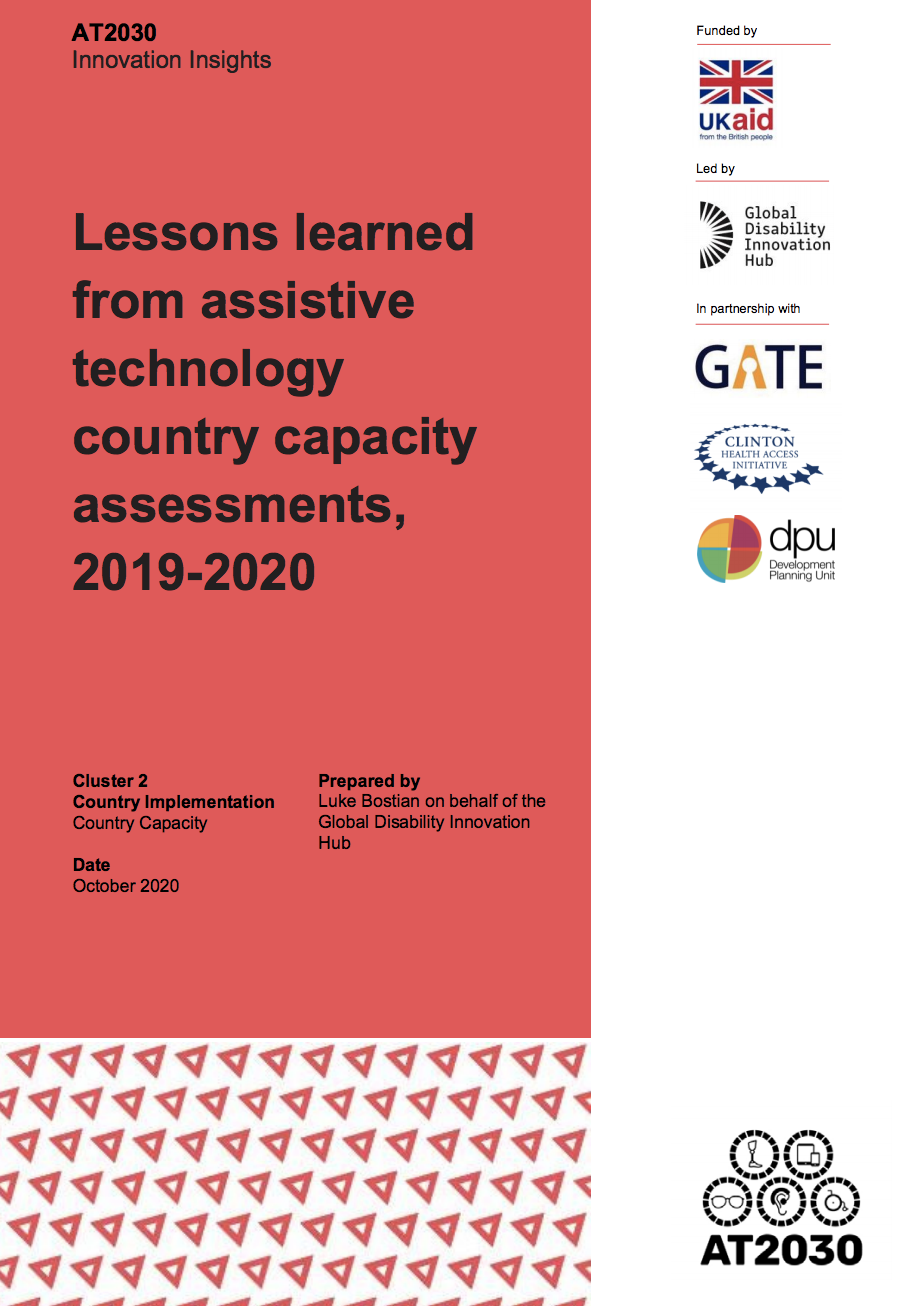Search Our Whole site:
Just Search: Liberia

Liberia: Country Investment Fund and the production of National Priority Assistive Products List and National Roadmap to Increase Access to AT
Under the AT2030 programme and with the support of ATscale and the Country Investment Fund (CIF), the Clinton Health Access Initiative (CHAI) was the lead technical partner to the Liberia Ministry of Health in the development and validation of two major national documents for access to assistive technologies: National Roadmap to Increase Access to Assistive Technologies (2021-2023) and Liberia National Priority Assistive Products List (APL), First Edition. The development of these documents will pave the way in ensuring Assistive Technology can be accessed by disabled and older people living in Liberia.

Liberia Country Capacity Assessment
Liberia has a disability prevalence of 3.17%. Of the disabled population, the majority experience visual impairments (34%), followed by mobility impairments (25%), hearing impairments (11%), communication impairments (4%), and cognitive impairments (4%). This Assistive Technology Country Capacity Assessment looks to understand the country’s current systems capacity to provide AT. The findings are intended to increase awareness and knowledge of AT among partners; and to identify gaps that would benefit from increased and coordinated investments.

The Liberia Evidence Lab: A new scalable model to deliver School Eye Health
Under Cluster 3: Country Implementation of the AT2030 programme, AT2030 partners are working with country governments to identify opportunities to drive availability and affordability of AT. EYElliance, CHAI and the AT2030 programme published a case study on work happening in Liberia to expand access to eyeglasses so that students can achieve better outcomes in school.

National Clinical Guidelines for Basic Eye Care in Liberia
The purpose of the National Clinical Guidelines for Eye Care is to set out standards and clinical best practices for the provision of basic eye care and management of various eye conditions by providing first aid, non-surgical or surgical interventions, and assistive devices s for use by health workers working in the community, primary clinics, or secondary health centers. These Guidelines provide technical and clinical guidance under the umbrella of the National Eye Health Policy 2022-2032.

MiracleFeet: The human impact of foot braces in Nigeria and Liberia
The Assistive Technology Impact Fund (ATIF), part of the AT2030 programme, has committed investment to support the company MiracleFeet, who provide clubfoot treatment to children in LMICs. To better understand and evidence the impact of MiracleFeet's work for children living with clubfoot, ATIF commissioned 60 Decibels to conduct research using specifically designed tools that could measure the impact of assistive technology. The results are shared in this insightful report, including findings from 200 parents and guardians of Nigerian and Liberian children who have undergone treatment using the MiracleFeet brace.

Final Report: Assistive Technology Country Capacity Assessment in seven African Countries using WHO Assistive Technology Assessment-Capacity Tool
Draft prepared by Clinton Health Access Initiative (CHAI)

Learnings from the Implementation: Assistive Technology Country Capacity Assessment using WHO Assistive Technology Assessment-Capacity Tool
This draft was prepared by the Clinton Health Access Initiative (CHAI)

Lessons learned from assistive technology country capacity assessments 2019/2020
The purpose of the CCAs is to “capture a high-level understanding of the often-fragmented AT sector in a country or region,” helping raise awareness about AT gaps and opportunities and contributing to advocacy and policy and program development. One year after the first CCAs began, GDI Hub commissioned research into lessons learned so far and recommendations for how the tool and process might be improved in the future.